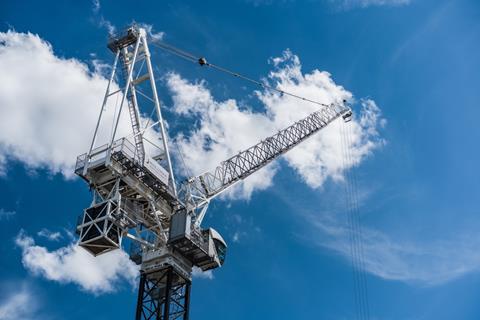Analysts paint picture of cautious optimism in face of year-on-year decline across metrics
Construction output fell slightly in the second quarter according to the latest figures from the Office for National Statistics (ONS).
The government stats body said that output between April and June was 0.1% down on the previous quarter (January to March), owing to a 0.5% drop in new work.

However, repair and maintenance ticked up slightly (0.4%) over the same period.
In June alone, output grew by 0.5% compared to the previous month, with new work up 0.9% and repair and maintenance edging up by 0.1%.
Construction new orders also grew by 16.5% in the second quarter, mainly coming from private commercial new work and infrastructure new works, which grew by 15% and 23% respectively.
Scott Motley, head of programme, project and cost management at AECOM, said the second consecutive month-on-month growth was “further proof of the sector trending in the right direction”.
It comes as data firms reported a relatively gloomy picture of prospects for the industry.
According to Barbour ABI, contract awards were 20% down on the previous year in July, while planning approvals were down 36% on the year.
Planning approvals in housing alone decline 16% on the prior month, although infrastructure bucked the trend with significant growth.
“Despite some promising energy projects, we have yet to see a significant increase in Residential and Infrastructure awards that we might expect with the new government in the coming year,” said Ed Griffiths, head of business and client analytics at Barbour ABI.
>> Read more: The ins and outs of Labour’s new National Planning Policy Framework
>> Read more: Construction clients to watch: what suppliers need to know
“Infrastructure planning approvals will be of particular interest as an area where Labour can have a more direct and immediate influence,” he added.
“The top approval for Infrastructure in July was the £200m Medway One Energy Hub followed by two 400MW battery storage facilities. Ed Miliband’s headline grabbing approval of several large solar panel projects will likely have a big impact in next month’s figures.”
Glenigan, meanwhile, reported a drop in underlying project starts, which were 11% lower in the three months to July than in the same period the previous year, despite inching up (2%) against the preceding three months.
Overall, work starting on site failed to grow on the preceding three-month period, declining 10% during the three months to July.
It also estimated a drop in detailed planning approvals of around 32% against last year, which it attributed to the summer slowdown and the election.
But Gleigan’s economic director Allan Wilén said there could be a “cautiously optimistic outlook within the industry, particularly as the new government’s planning reforms begin to take shape”.
Aecom’s Motley agreed that there were reasons for optimism.
“Housebuilding has long been a drag on the sector’s output, so Labour’s quick action to accelerate the delivery of new homes should bolster both confidence and work pipelines,” he said.
“Combined with interest rates beginning their descent, it’s likely we’ll also see more emboldened clients firing the starting gun on new projects.
“The key challenge now will be increasing capacity, particularly addressing shortages of skilled labour, to help the industry absorb the influx of new orders.”




























No comments yet